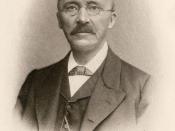The ancient city of Troy, a legendary city in classical literature and Hollywood films alike, has been an attraction to visit for at least twenty-five centuries. Visitors such as Alexander the Great, who stopped at Troy in 334 BC while on route east to conquer Asia, came to Troy looking for the city immortalized in Homer's Iliad. Presently, archaeologists visit Hisarlik, a site in northwest Turkey, as it is believed to be the location of the ancient city. Alexander must have been puzzled when he had arrived in Ilion, the name of the city at the time of his visit. Ilion was a small colony founded centuries after the Trojan War supposedly took place; Alexander and his men must have had a similar reaction to what they saw as many a tourist does today. Visiting the site today, you will find no grand buildings, just broken marble blocks everywhere, and stubs of stone protruding from the ground at every possible angle.
To the ancient Greeks, the Iliad was the fountain of Western civilization. Troy, to the Romans, was the birthplace of Aeneas, who escaped the burning city to found Rome. So what is the real story of this city? Is the Iliad a true account of history, or just a tale that has been passed down through the generations, for the sole entertainment of its audiences? These are questions that classics experts, archaeologists, and even palaeontologists have studied for many years. The Iliad can never be seen as pure history as the work predates, by three centuries, the concept of history as a sourced analysis of past events. But by studying the stories, as well as the physical evidence left behind today, we can find clues to the reality in this myth.
A German archaeologist from the University of Tubingen,



Well researched.
Good work, although I can't believe that Homer (if he wasn't blind after al) really did see Troy. We would have no ideas what Troy looked like in the 8th century BC, and what's left of the site is similar to other such planned ancient cities.
1 out of 1 people found this comment useful.